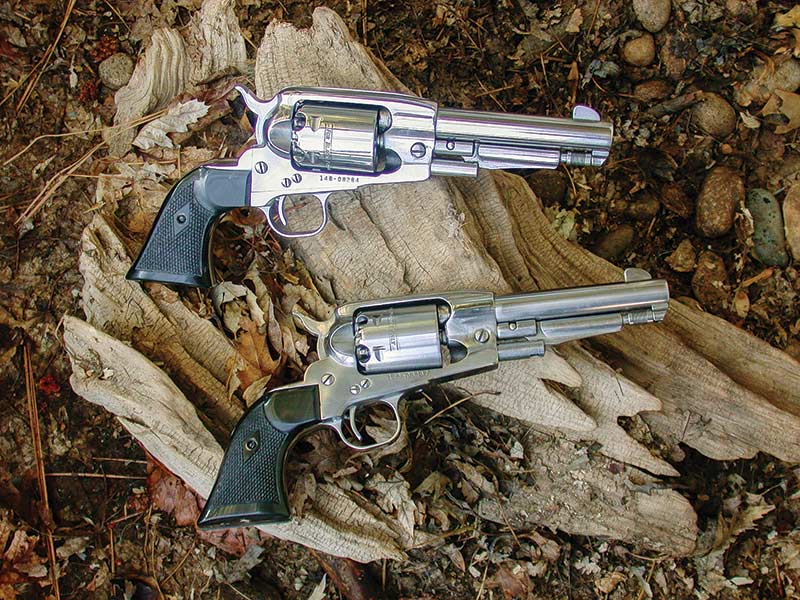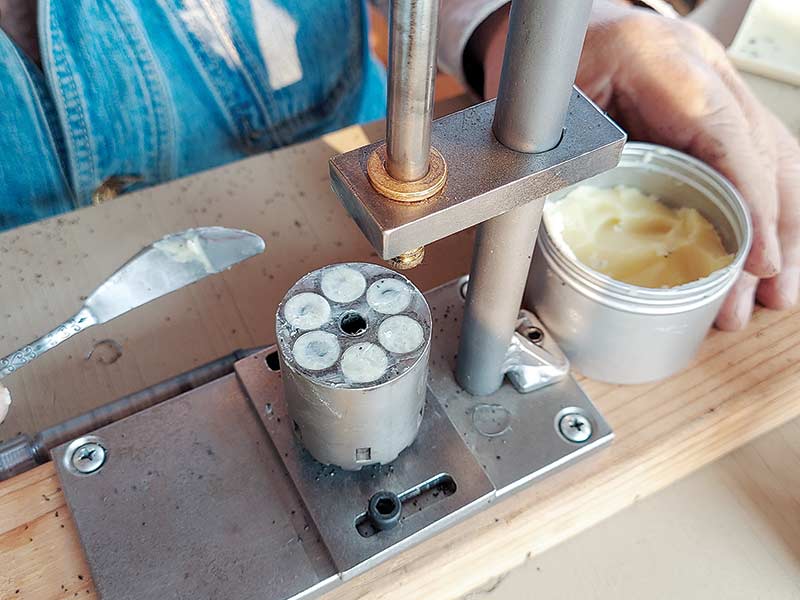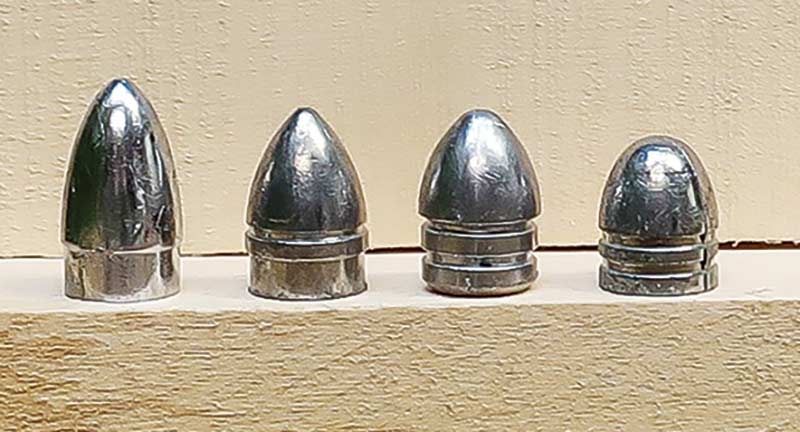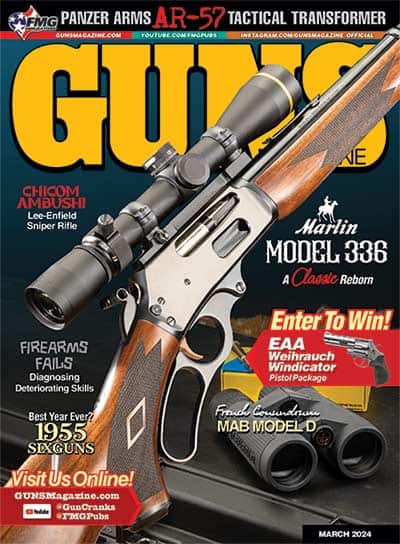Conical Bullets And
The Ruger Old Army
One Of The Best BP Sixguns Ever!
Fifty-plus years ago, when Bill Ruger decided his company would offer a percussion revolver, he insisted it would be the best ever manufactured. It would have a top strap as did the Remington and it would be as strong as the Super Blackhawk. The result was the Old Army with adjustable sights, a 7 ½” barrel and offered in both blue and stainless steel finishes.
My friend and I purchased the first pair of stainless steel Old Armies to arrive in Idaho. The stainless steel finish was definitely welcomed as it made cleanup so easy. Ruger used the same coil-spring-operated action in the Old Army as found in their single-action sixguns. They also made the loading lever stronger and easier to remove/replace, and provided easily adjustable sights. The gun is rugged, simple and extremely accurate.
Sizing
The Ruger Old Army takes a larger diameter bullet than the standard 0.451″ or 0.454″ size of Colt or Remington percussion revolvers, be they original or replica. The Ruger requires a 0.457″ round ball or conical bullet. The conical bullets give excellent accuracy in my 7 ½” Old Army. Using a 225-grain conical over 35 grains by volume of Pyrodex P results in a muzzle velocity of 870 fps with six shots in 1″ at 25 yards. Energy-wise this makes the Old Army the equivalent of .45 ACP Hardball. Using 40 grains or H777 FFFg results in muzzle velocities well over 1,000 fps with a 0.457″ round ball with excellent accuracy. Now we have surpassed .45 ACP Hardball and are in the +P range using a percussion sixgun with black powder!
At this stage of my life, I have pretty much settled on H777 as my powder of choice in the Old Army and most of my other percussion sixguns. However, I have backed off on the power level and now my standard load is 30.0 grains when using the Johnston & Dow and Kerr from molds supplied by Eras Gone or the commercial-cast Kaido lubricated bullet. The Ruger Old Army has a generous loading port from the factory. This allows easy loading of conical bullets without removing the cylinder from the sixgun.
One of the problems with both original and replica percussion pistols, especially the Walker and some of the Dragoons, was the propensity for the loading lever to unlatch and fall down when fired. My first Remington replica did this quite often. With the Old Army, the loading lever is positively locked into place and will not drop down upon firing.
The loading lever, rammer and cylinder base pin are an interrelated assembly that can be removed from the sixgun with a simple turn of the large screw in the front of the frame. This is easily accomplished by using a coin as a screwdriver. This loading lever exerts the best leverage in seating the ball over the powder of any percussion revolver ever produced. However, as my hands have become more tender, I find the use of the SliX Hand from SliXprings to be invaluable. It fits over the loading lever and gives a little more leverage with less pain to my old hands.
I have been shooting one of the original stainless-steel Old Armies for over five decades, using it often in the past in black powder matches. With replaced sets of nipples, it is still as good as new. For my use, it has been fitted with a Ruger Super Blackhawk grip frame and checkered walnut grips. The Old Army is the only big bore sixgun upon which the Super Blackhawk grip is comfortably firing for me. This one is also one of about 500 that came through with the “BLACK POWDER ONLY” inscription upside-down on the cylinder.
The original Old Army from the early 1970s was offered in both blue and stainless with adjustable sights. The last Old Army offered before they were dropped from production were both blued and stainless-steel fixed-sighted 5 ½” barreled, easy-packin’ sixguns. Most cartridge shooters seem to prefer shorter barrels as witness Ruger’s great-selling Vaquero is about 97% short barrels, and only 3% 7 ½” lengths. Until the arrival of the 5 ½” Old Army, most cap-and-ball shooters had been restricted to the longer barrels on factory guns, or they had to have them custom cut to shorter lengths. The Old Army makes a most attractive shorter-barreled sixgun!
Before production ceased I acquired a pair of 5 ½” Old Army stainless-steel cap-and ball sixguns. They came with Ruger’s faux ivory grips with a black eagle medallion. These were removed and replaced by Eagle Grips Gunfighter Grips in checkered black buffalo horn. There is not much recoil, relatively speaking, with a percussion sixgun such as the Old Army; however, there is enough to make the gun slip in the hand. The checkering on the grips helps to prevent this from happening.
Round Up
As mentioned, the Ruger Old Army uses 0.457″ round balls and I use those from both Speer and Hornady interchangeably and with excellent results. Round balls are usually sold in three diameters for the .44-.45 percussion revolvers, namely 0.451″, 0.454″ and 0.457″. The smaller balls will not seat tightly in the Ruger chambers and the 0.454″ may also work their way out of the cylinder.
The 0.457″ round balls are tight, requiring some pressure to seat. When the round ball being loaded cuts a ring of lead as it is seated, we have the right diameter. This carries over to conical bullets also as they must be large enough to tightly fit the cylinder, not only seal the chambers but also to keep the conicals in unfired chambers from moving forward when the gun is fired.
For whatever reason, Ruger stopped production of the Old Army nearly two decades ago and I doubt we will ever see it again. They still show up infrequently at gun shops and were at relatively reasonable prices. I found several for $300–$400 back then; however, today they are likely to be in the $1,000 range.







